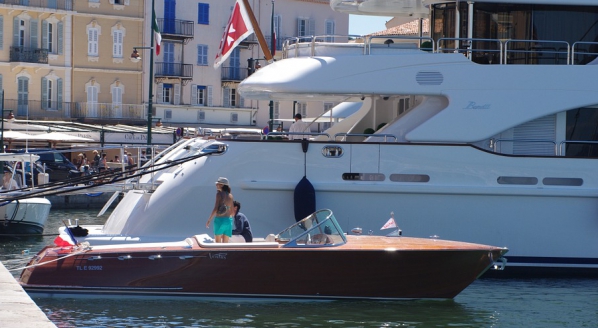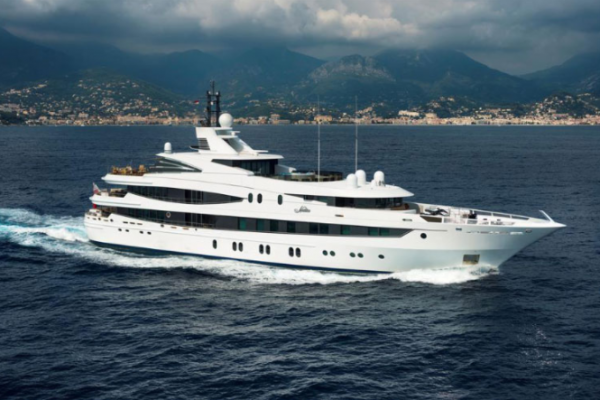Lessons to learn from Goldman Sachs seizing 66m superyacht 'Natita'
In light of Goldman Sachs seizing William Kallop's 66m superyacht Natita, we explore the risks that banks face when lending against superyachts.…
Following the news that William Kallop, the American oil mogul, has had his 66m Oceanco-built superyacht, motoryacht Natita, seized by the US branch of Goldman Sachs, we explore whether or not there are lessons to be learned beyond the wisdom that it is always a good idea to repay debts owed to powerful financial institutions. Natita is one of three superyachts owned by Kallop, the other two being 57m motoryacht Bad Girl and a 28m vessel previously used by John F. Kenny, former president of the United States.
The story begins with Kallop borrowing $32 million from Goldman Sachs against Natita and Bad Girl. This form of borrowing, often referred to as a ‘wealth loan’, is becoming increasingly popular with the world’s super rich. Do you want to add a fifth mega-mansion to your portfolio, but your cash is tied up in assets? Why not lend money from a bank against your Picasso, classic Ferrari or superyacht as a security?
According to Goldman Sachs, in November 2016, with $28 million still to pay, Kallop stopped financing the repayments of his loan, eventually leading him to default on the loan and cause Goldman Sachs to take legal action. Upon filing a suit with the Miami federal court, Natita was seized at a marina in West Palm Beach. Three of Natita’s crewmembers were also victorious in the court of law, earning $90,000 in back pay from their time on board.
Natita was then put on the market for an asking price of $57.5 million, only to have her priced reduced to $52 million that very same year. Subsequently, Natita has undergone a series of price reductions that have left her at the current asking price of $39.9 million, with no takers. The wider media has speculated that Natita will, most likely, be put up for auction.
It is easy to see why banks are becoming increasingly attracted to wealth loans. If the loan period proves to be successful, the financial institution turns a healthy profit, as with a traditional loan, as well as managing to please, and retain the custom of, an extremely wealthy individual. Equally, if the borrower reneges on the agreement the lender may be left with an asset that is far more valuable than the sum of the remaining loan. However, superyachts are not classic cars, art or jewellery and, more so than the former, estimations of value and realistic resale periods can be, at best, contestable.
“For the banks, the risk of superyacht lending is the fact that valuations can be somewhat of a dark art,” explains Leon Batchelor, managing director of Arc&Co. Marine & Aviation. “Nobody really knows what the value of a yacht is – its value is whatever someone will pay for it. That’s why a lot of banks restrict what they will lend against to a specific number of shipyards. So, from the banks’ perspective, the amortisation of the loan may not be quick enough to keep pace with depreciation.
“Secondly, the superyachts are movable assets. Lending against a superyacht will require a certain degree of compliance on the part of the borrower. The banks will be concerned that the vessel could be moved to a jurisdiction within which it becomes impossible to get hold of. The bank will need to limit where the yacht can be used.”
It would be remiss of me to claim that loaning against luxury securities in general does not carry an element of risk. But, unlike other assets, it is extremely rare for a superyacht to appreciate in value – the longer you sit on a yacht ,the less it is worth – and the yearly costs of attempting to stop a vessel from falling into disrepair can be significant. Superyachts, at the end of the day, are loss-making assets apart from the lucky few and, as such, may not necessarily be the most suitable of assets to lend against.
That being said, with only $28 million still to recoup on the loan and a current asking price of $39.9 million, Goldman Sachs is still able to profit substantially from the collapse of the initial agreement. However, sources close to the sale of the vessel have suggested that Natita is proving difficult to sell, partly due to its poor condition, and partly due to its physical makeup. With a draft of five metres, Natita is unsuitable for the US’ most desirable anchorages and her unique canoe stern profile is not exactly the flavour of the month. Her deep draft suggests that the best market for Natita would most likely be Europe. But, yet again, getting her there will incur a significant cost.
Still, all it takes is one wealthy individual to take a fancy and the Natita nightmare becomes a fairy tale, for all accept William Kallop.
Profile links
Click here to become part of The Superyacht Group community, and join us in our mission to make this industry accessible to all, and prosperous for the long-term. We are offering access to the superyacht industry’s most comprehensive and longstanding archive of business-critical information, as well as a comprehensive, real-time superyacht fleet database, for just £10 per month, because we are One Industry with One Mission. Sign up here.
Related news

The blame game and the French superyacht market
Is the French superyacht market right to blame changing regulations for its declining revenues or does that ignore a host of other factors?
Business
Related news
The blame game and the French superyacht market
7 years ago




